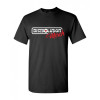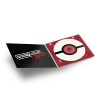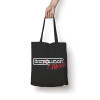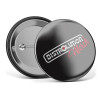Creating and selling your own merchandise has become essential for artists, bands, and labels, whether they're independent or more established. It's much more than just a supplementary income: merch allows you to extend your artistic universe, strengthen fan attachment, and assert your identity.
But be careful, merchandise isn't just a simple "goodie" at the end of a concert. Poorly prepared, poorly designed, or poorly managed, it can become a real nightmare. Lost money, sleeping stock, damaged image... And unfortunately, these mistakes are common, especially among those who launch without guidance.
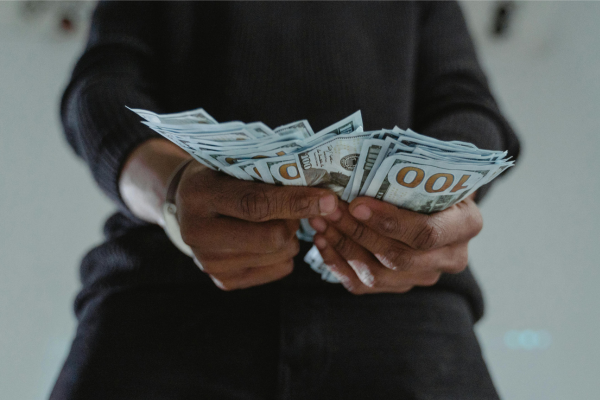
In this article, we'll review the most common mistakes we see at Distrolution Merch, and most importantly: we'll explain how to avoid them to maximize the impact (and sales) of your merch.
1. Producing too much... or too little
When the time comes to launch your first merchandising drop, there's always that mix of excitement and uncertainty. You want to do things right, but you don't have a crystal ball. Will fans buy? How many? And most importantly: in what size?
So you make a decision, sometimes by instinct. And that's where the first mistake slips in.
Some rush in headlong, order a large stock to "save money per unit", and end up with boxes that sit idle. Others do the opposite: they play it too safe... and miss out on easy sales.
Stock management is a delicate balance, especially when starting out. But there are concrete solutions to avoid ending up with either too much or not enough.
❌ Too much stock:
It's the classic mistake: you order 200 t-shirts thinking they'll fly off the shelves when your EP drops. Result: XL sizes gather dust, the design becomes outdated, and your money stays locked in boxes.
❌ Too little stock:
You play it extremely safe, you order 20 t-shirts. Except that on the day of your concert, 5 fans leave empty-handed. You have to relaunch production... but the unit cost is higher and the delays are frustrating.
✅ The right approach:
Anticipate realistic demand based on your current fanbase (concerts, social networks, mailing...). Give yourself flexibility by launching an initial test drop. You can also opt for a pre-order solution, to produce only what's actually sold.
2. Neglecting product quality
Merch isn't just a promo tool or an object to make a quick profit. It's a real product that people will wear, maybe even with pride. And as such, it must meet a basic requirement: be of quality.
What we sometimes forget is that a bad product can do more harm than good. It can tarnish your image, frustrate a loyal fan, or give the impression that you've settled for the bare minimum.
As an artist, you should view your merch as a physical extension of your music and universe. It deserves the same level of attention as your sound or album artwork.
❌ What we see too often:
A thin t-shirt that warps after one wash. A rushed print that fades after two concerts. An itchy sweatshirt or poorly placed embroidery.
✅ What needs to be done:
Research the standards: some textiles (like B&C Inspire) are known for their quality and ethics. Don't look for the cheapest possible, but the best value for money.
A satisfied fan will talk about it to others. A disappointed fan will too... but not in the same way.
3. A design that's not readable / too complex
Creating a striking visual for merchandising is a specific exercise. And yet, this is often where many artists stumble.
Either because they want to do too much, putting their entire universe into a single visual, or because they don't think about the constraints of a t-shirt or tote bag.
A good merch design doesn't need to tell a whole story. It should catch attention, be immediately recognizable, and make people want to wear it – not just admire it.
You need to think about impact, simplicity, readability. And most importantly: design a visual meant to live on clothing, not just on a screen.
❌ The frequent trap:
Illegible logos. Over-detailed visuals that don't print well. Color choices that don't contrast enough.
✅ The right reflexes:
Favor strong contrasts, clean designs, and strategic placements (chest, back, sleeve...). If your visual style is complex, work with a designer who understands textile printing constraints. Think utility and aesthetics: fans should want to wear it, not just store it.
You want your merch to be seen in the crowd? Your message needs to be clear, visual, and confident.
4. Forgetting your artistic identity
Merch is a showcase. It speaks about you, even when you're not there to do it. It circulates in the street, appears in stories, ends up on people you don't know. And yet, it tells something about your project.
That's why offering a product that isn't aligned with your musical style or visual identity is a common mistake... but an avoidable one.
When we forget this coherence, we risk creating something "pretty" but off-topic. A visual that could belong to anyone, but not to you. And in that case, even your most loyal fans might pass it by.
Your merch should extend your identity, not dilute it.
❌ What we sometimes see:
A metal band with a t-shirt that looks like a collab between H&M and Coachella. Or an ultra-minimalist electronic project releasing a sweatshirt with cartoon typography.
✅ What to aim for:
Ask yourself: "Could this visual be an extension of my music?" Consistency with your website, your album covers, your visual identity. If you have a regular AD or illustrator: trust them for the merch design too.
Merch is often the first thing people see, well before your music. Might as well be careful about what you say with it.
5. Offering too few sizes or models
One might think that offering 2 or 3 "standard" sizes is enough. But the reality is that the audience is diverse, and not everyone fits in M.
By thinking only of one cut or one range of sizes, you risk excluding part of your community – sometimes without realizing it.
And then there are style preferences: some want oversized, others want a fitted cut. Some people prefer hoodies, others prefer accessories like caps or tote bags.
In short, the more inclusive you are in what you offer, the more opportunities you create to sell, without necessarily having to create 50 different items.
❌ Why is this a problem?
You automatically exclude part of your audience. Women, XS or XL+ sizes, teenagers or even children can't find anything in their size. You miss out on easy sales due to lack of foresight.
✅ The solution:
From S to XXL is the bare minimum. Add a women's cut option if you have a mixed fanbase. Diversify the items: tote bags, hoodies, beanies, patches... And most importantly: ask your community what they want!
Adapted merch = more sales + more satisfaction.
6. Not showcasing products properly (poor visuals)
You can have the best design in the world, on an incredible fabric... if your presentation visuals are bad, no one will buy it.
It's as simple (and brutal) as that.
In the Instagram era, visuals are everywhere. And if you want your product to catch the eye, stand out and be appealing, you need to showcase it intelligently. Yet, this is often a neglected point: photos are taken hastily, poorly lit, without real effort in composition.
And yet, it's one of the most decisive elements in the purchasing act, especially online.
❌ Classic mistakes:
Poorly lit photo, blurry, badly framed. Only one angle of view. No photo of the item being worn → impossible to see the actual result.
✅ Best practices:
Take multiple photos (front, back, details, worn). Use a simple background, natural or consistent with your universe. Shoot in natural light or with soft LED lamps. Also include situational photos: at concerts, rehearsals, in the street.
Good visuals triple the chances of selling. It's proven. And you don't even need a pro photographer to do it well.
7. Forgetting to promote the merch
Launching merch without communicating about it is a bit like playing in an empty venue. You can have the best product in the world: if no one knows about it, it won't sell.
Communication around your merch shouldn't be a last-minute addition. It should be thought of as a mini-launch, with its teasers, visuals, and key moments.
Merch isn't just a product: it's also an excuse to create content, engage your community, to tell a bigger story. And that's where many miss out on all the potential.
❌ What often happens:
You release your merch thinking people will naturally come to buy it... but you haven't announced or prepared anything.
✅ The winning approach:
Tease the launch in advance (stories, behind-the-scenes, votes on designs...). Prepare a nice photoshoot with the product being worn. Post regularly: reminders, customer photos, unboxing videos. Create scarcity: limited edition, deadline, serial number...
If you don't talk about your merch, no one will do it for you.
8. Neglecting hidden costs
The most insidious mistake? Thinking that subtracting production costs from selling price is enough to know your margin.
In reality, the profitability of your merch depends on many small costs that are too often forgotten: packaging, shipping costs, payment commissions, potential returns, not to mention the time spent managing it all.
Not including these elements in your calculation means risking selling at a loss, or barely breaking even. And that's discouraging in the long run.
❌ What we often see:
You sell a hoodie for $20, it cost you $12, you think you have $8 margin. But you forget the envelopes, shipping costs, VAT, Stripe or Paypal commission, stickers, etc.
✅ To be profitable:
Make a simple calculation spreadsheet with all expense lines. Calculate your real net margin, not just gross margin. Also consider your management time if you're doing everything yourself.
9. Not having a clear sales system
You can have a good product, a good price, a loyal fanbase... but if your sales system is unclear, slow, or amateur, you risk blocking your own success.
We still see too many artists selling their merch haphazardly: through private messages, Google forms, or waiting for concerts to move their stock. The problem? It's neither practical, secure, nor scalable.
To sell effectively today, you need a smooth, professional, and reassuring customer journey. People want to click, pay, receive. Period.
And that's not a constraint: it's an opportunity.
❌ The problems:
You waste time. It's unprofessional → loss of buyer confidence. You forget orders. You miss out on buyers who want fast, secure, reliable payment.
✅ What needs to be put in place:
A real online store (Shopify, website or directly on our online marketplace Distrolution). Secure, automated payment. Simple link to share in bio, in stories.
Extra tip: To ensure you sell more at your concerts, don't forget to bring a payment terminal to accept credit cards.
The simpler it is = the more you sell.
Bonus: Thinking that merch is "just a t-shirt"
Merch isn't just something to make ends meet. It's a vector of image, attachment, visibility. It's what people wear on the street, at concerts, in stories. It's what connects them to you even when the music isn't playing.
So take it seriously. Put your heart and energy into it... or surround yourself with the right people.
✅ Plan smart inventory
✅ Choose quality
✅ Clarify your designs
✅ Stay true to your universe
✅ Offer max sizes & products
✅ Take care of visual presentation
✅ Communicate before, during, after
✅ Calculate your costs
✅ Make purchasing easy
✅ And above all: think strategy, not "DIY"
Need a hand?
At Distrolution Merch, we help you do things right from the start:
- A team of musicians, experienced with merch.
- We check your files to make sure everything is ok.
- We have you validate a preview before launching production
Fewer mistakes. More sales. Zero hassle.
Contact us now to launch your project!
And to create your online store, it's here!

